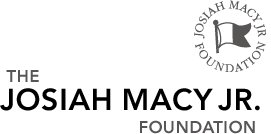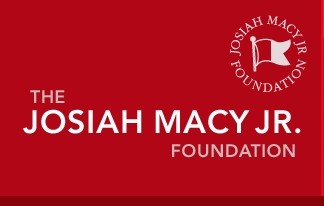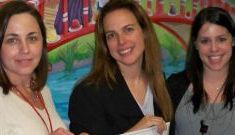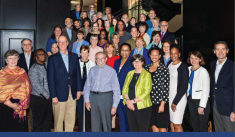Our Grantees
Across the Foundation’s priority areas, our grantees are working to improve the health of the public through innovative research and programs. The Foundation awards up to 40 grants on a rotating schedule each year.
Transforming Pediatric Residency Training to Improve Care for Underserved Children
Research indicates that social, economic and environmental problems, such as air pollution, unhealthy fast food, poverty, homelessness and other factors, can contribute or cause poor health in children, especially those living in underserved neighborhoods.
Pediatricians often serve at the front lines of the battle to address such problems yet they receive little in the way of training when it comes to such broad social and environmental issues. To address that gap, the American Academy of Pediatrics (AAP) launched a training program for residents with a three year grant from the Josiah Macy Jr. Foundation.
“Many of society’s most pressing health problems, such as obesity, and poor mental health get their start in childhood,” said Jeffrey Kaczorowski, MD, the principal investigator for the project. “Yet we know there is a critical shortfall of primary care doctors, including pediatricians, who are trained to advocate and press for changes in the environment, changes that can help keep children healthy,” said Kaczorowski, who is an associate professor at the University of Rochester in New York.
Surveys of chief residents show that most have not been taught to work as advocates for children. And assessments of residency programs by AAP have found that nearly one out of four have no community health training that takes place in inner city clinics or underserved neighborhoods, places where domestic violence, HIV infection, obesity, diabetes, asthma and other potentially disabling health problems are common.
To teach residents the basics of providing care in such neighborhoods and the skills to successfully advocate for children, the AAP will use the Macy funding to transform ten residency training sites across the country. They include: Akron Children’s Hospital; Duke University Medical Center; Phoenix Children’s Hospital and the Maricopa Medical Center; the John H. Stroger, Jr. Hospital of Cook County; New York Presbyterian Hospital/Weill Cornell Medical Center; University of California at San Francisco-Fresno; University of Oklahoma; University of Texas Southwestern; University of Virginia and the University of Wisconsin.
The goal of the program is to embed a more robust community health and advocacy curriculum into all ten training sites, Kaczorowski said. For example, communities that lack access to healthy foods or safe playgrounds can make it hard for children to eat a healthy diet or get regular physical activity. Pediatricians trained in the Macy-funded program will get experience in pressing for changes in the community that play a role in good health. Or pediatric residents might learn how to partner with education leaders in order to find ways to provide healthier food to schoolchildren.
Here are a few examples of how the ten sites are beginning to refashion residency training programs:
The University of Virginia has taken the lead in teaching residents how to advocate for children’s health by taking them on visits with state lawmakers.
Duke University has forged a partnership with the Durham Parks and Recreation Department to begin to construct a community-wide wellness program. That program, which would include parks and safe places for children to bike, run and play. Such an effort might help children in underserved communities get the recommended physical activity they need to stay fit.
The University of Texas at Southwestern is building a relationship with Bachman Lake Community School in order to engage pediatric residents with school children by arranging for home visits. Such home visits are often vital to identifying environmental problems that can be affecting a child’s well-being, Kaczorowski said.
For example, a child living in an apartment with a mold problem might start to suffer from asthma attacks or other respiratory problems. Residents who visit the home might identify that health problem and help the parents take steps to address it, he said.
In fact, Kaczorowski says that each residency program will be expected to develop partnerships with community organizations in locations where underserved children and their parents live, work and play. A successful partnership with schools, park and planning departments, philanthropic funders, health care providers and other groups can improve the likelihood that pediatric residents will get the resources and form the teams that are needed to advocate successfully for a healthy environment, he said.
In addition to ongoing efforts at these ten sites, the project intends to create a ripple effect in which leaders from these pioneering programs will teach other faculty leaders how to adopt similar changes in curriculum and training for pediatric residents. In order to address the root problems of many pediatric problems, the next generation of pediatricians must learn how to advocate for a healthy environment so that all children have an equal shot at staying healthy, Kaczorowski said.





 11.13.18
11.13.18